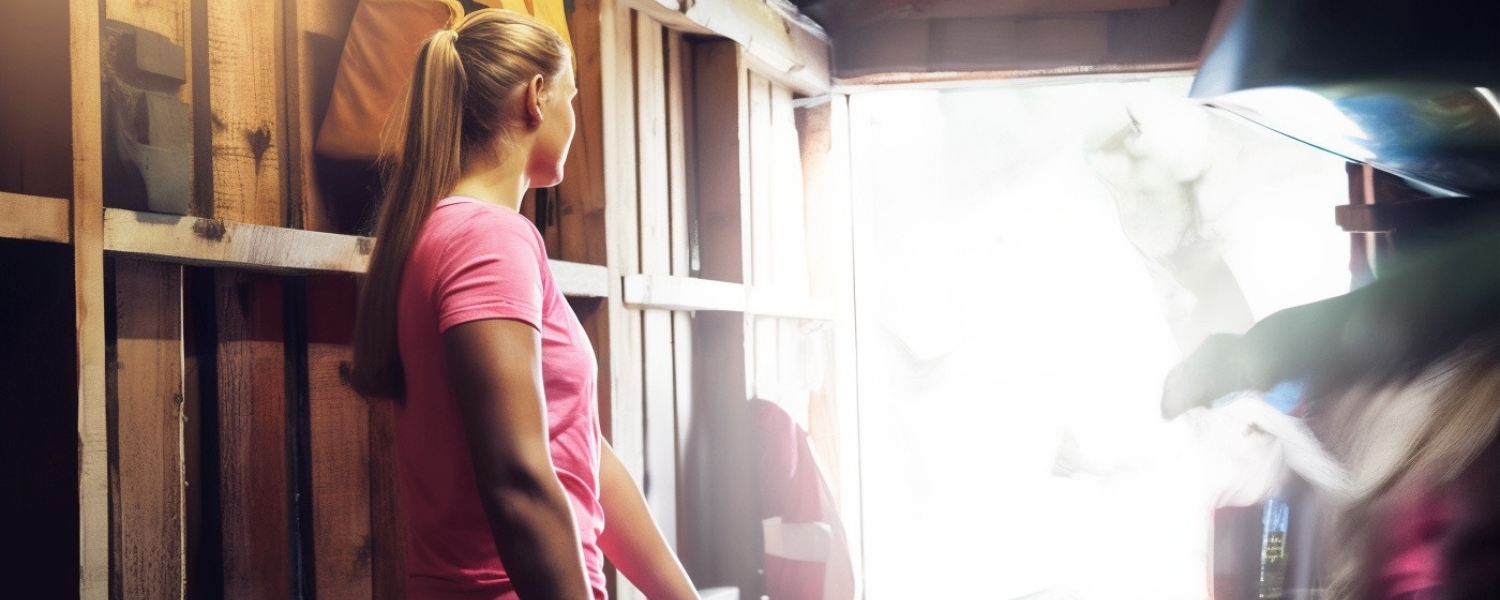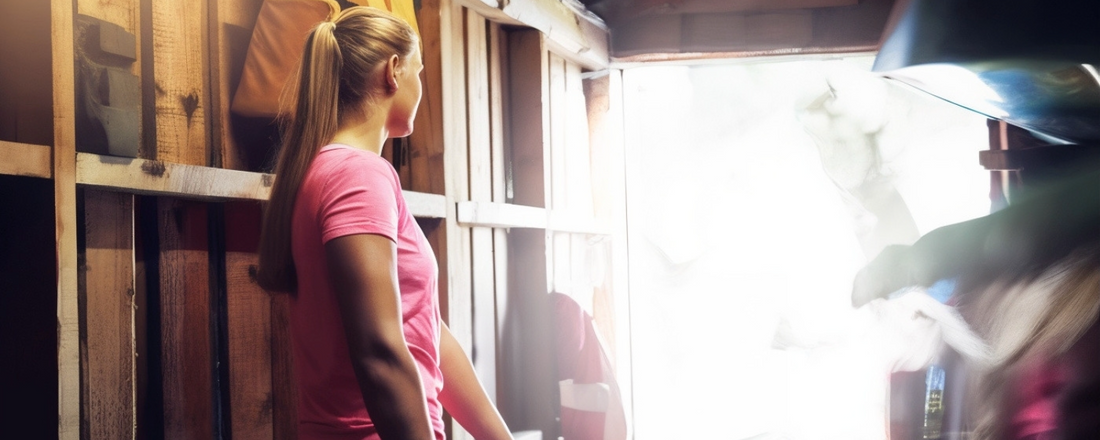Keep your kayak clean, inspect for any damage, and store it properly to ensure its longevity.
If every paddler had their way, kayaks would glide through the years without a scratch or dent to their hulls. But let’s be realistic here – a well used kayak takes a beating! Just like a car, boat or bike, you need to care for your kayak, treat it well, and store it properly.
The good news is that most kayaks are resilient and kayak maintenance requires minimal effort. Today, we’re going to explore the ins and outs of kayak maintenance and care. Keep reading to learn everything you need to know!
Soon, the process will become nothing more than an automatic routine!
Why is Kayak Maintenance so Important?
Whether the kayaks you own are modular, recreational, or inflatable, proper maintenance is important for every single style. For starters, upkeep keeps you safe and secure on the water. Regular inspections also allow you to identify any damage or wear that could compromise the kayak's structural integrity. This then reduces the risk of accidents or equipment failure while you’re out on the water.
Maintenance extends the lifespan of your kayak, which helps to preserve its overall value and functionality over time. Neglecting it, on the other hand, can lead to costly repairs down the track or the need for premature replacement.
Pre-Season Kayak Maintenance: Taking Your Kayak Out Of Storage
The last thing you want to happen when you pull your fishing or recreational kayak out of storage for your first spring paddle is to find that something was left broken from last year or damaged during storage.
Here are some tips for inspecting your stored boat:
Look Over The Hull For Damage
Long term storage is one of the most common ways a fishing or recreational kayak’s hull can be damaged. If storing long term it’s important to move or rotate the kayak occasionally so there aren't consistent pressure points. In the case of a depressed hull in a roto-mold kayak, heat will often be enough to return the kayak to its original shape. Leaving it in the sun on a hot day will often pop it back to its original shape.
Inspect The Rudder/Steering System
If your kayak has a rudder, it is recommended both during the paddling season and while in storage that you keep the rudder and pedal lubricated. A spray of a silicone based lubricant safely lubricates, resists water and protects metal and non-metal surfaces such as rubber, plastic and vinyl. This is critical especially if you paddle in salt water
Inspect The Rigging
Make sure the hardware, perimeter lines and bungees are all in good shape. UV radiation from the sun can deteriorate plastic pad-eyes and degrade bungees/lines. Look over the rudder if it has one and evaluate the deployment lines, cables, pivot hardware and pedals. Make sure to repair anything that needs fixing now, rather than finding out on the water!
The PaddleZone team can certainly help you examine your rigging and make sure your kayak is ready for a long season on the water.
Replace Old Parts + Accessories With New Ones
This is the perfect time to retire old gear like rod holders or beaten-up paddles with broken drip rings, or parts on your kayak that may be compromised. You don't want to be on the water when things break. Look over all of your gear and remind yourself what was bothering you last year. If you found yourself wishing for an extra something last season, like another rod holder or a fishfinder mount, or camera mount, this is the time to add it!
Refill Emergency Gear
Go through your first aid kit, bailout bag and emergency repair kit to make sure everything is stocked. This is especially important to do because if it needs refilling, it means it was something you had to use last year!
In Season Kayak Maintenance
When kayak season rolls around, it’s easy to get caught up in all the excitement. However, we also recommend that you keep the following pointers in mind before you head out.
Here's a quick tip–avoid kayak maintenance by using a cart to transport your kayak to the water, they can save your back and your kayak all at the same time!
Use A Kayak Cart
Dragging your fishing yak on the ground will thin and weaken the material at the bottom. The worst case scenario being that it could lead to holes that will have to be repaired by a specialty shop.
Kayak carts are a win-win because they will protect your kayak from damage, plus make getting to and from the water an absolute cinch. You can grab a good kayak cart from your local PaddleZone store.
Keep It Clean
A fishing kayak doesn’t need to look shiny and new, but it’s good practice to quickly rinse down with fresh water after every outing. This will remove grime and salt that can lead to corrosion of the hull and prevent mould from growing.
Usually just taking the hose and spraying down the interior and exterior will suffice but it’s a good idea to give it a thorough scrub with mild soapy water and a kayak sponge a couple times a year.
Shield It From The Sun
Long exposure to the sun will affect more than just your kayak’s colour; the UV exposure will eventually weaken the plastic, making it brittle and prone to cracking. Leaving it out for a few days here and there won’t mean you should expect the hull or seams to crack or puncture the hull on the next outing, but over time will certainly lead to deterioration. It is not recommended to store your kayak under a tarpaulin even if dry as the increase in temperature and lack of airflow may affect the hull.
Ideally store your kay undercover in a dry area shielded from the elements. A cover for the cockpit is recommended as minimum to reduce the risk of having spiders and insects make themselves a new home only to surprise you on your next outing.
Cockpit covers are available in nylon and neoprene to suit your cockpit dimensions, simply measure the outside edge width and length to determine the best size:
https://paddlezone.com.au/collections/spray-skirts-cockpit-covers
If possible, a full cover is a great option too, providing protection both in storage and while being transported. There are nylon options for most skis or a fabric material for kayaks from 3.5m up to 6.1m in length:
https://paddlezone.com.au/collections/roof-racks
Use a 303 Protectant
Using 303 Protectant is a popular method of stopping harmful UV rays, but it requires re-application because the spray will wash away with rain and water from paddles. The best solution would be to use a kayak cover or store it indoors.
Clean & Dry The Kayak
On a dry day, unload any and all loose gear and put them aside; this includes any rigging accessories that are removable like a seat, deck bag or rod holder. Turn it upside down on a pair of kayak stands and lather it up with mild soapy water. From beneath, spray water throughout the cockpit interior and all the hatches, allowing any loosened sand, crud and dead bugs to drain out. Make sure to let everything dry out before putting it away!
You can also take a kayak sponge and scrub away if you think it’s necessary. Areas like the rear well can end up being a nesting ground for insects if they’re left alone during storage.
Care For Your Rigging Components
Look over any attached parts on the kayak, like bungee cords, rudder cables, seat buckles and such, and take note of any frayed cords or parts that need replacing and order a replacement part promptly. If any of the bungees, straps or buckles can be loosened or un-done during storage, loosen them. This will help retain their elasticity.
Make sure dirt was removed from bolts/screws during your clean earlier and sponge away anything left over.
Again, keep these tips in mind and you'll have an awesome and safe season.

Wrapping Up: 12 Basics of Kayak Maintenance
Proper maintenance is essential to keep your kayak in good condition and ensure a safe and enjoyable paddling experience. Here are some kayak maintenance tips:
- Cleaning:
- Rinse your kayak with fresh water after each use to remove salt, sand, or debris.
- Use a mild soap and water solution to clean the kayak, and avoid harsh chemicals or abrasive cloth/sponges that could damage the material.
-
Storage:
- Store your kayak in a cool, dry place, away from direct sunlight and extreme temperatures.
- If storing outdoors, use a kayak cover to protect it from the elements.
-
UV Protection:
- Apply a UV protectant to the kayak if it's made of plastic (polyethylene) to prevent sun damage.
-
Inspect for Damage:
- Regularly inspect your kayak for any signs of damage, such as cracks, punctures, or deep scratches.
- Repair any damage promptly to prevent it from worsening.
-
Hull Care:
- Check the kayak's hull for any deformities or irregularities.
- Sand down any rough spots or burrs, and make sure the keel is straight.
-
Hardware and Accessories:
- Inspect all hardware, including bolts, nuts, and fasteners, to ensure they are secure.
- Check accessories such as hatches, handles, and bungee cords for any signs of wear or damage.
-
Seat and Footrests:
- Ensure that the seat and footrests are in good condition and properly adjusted for comfort.
- Lubricate any moving parts to prevent stiffness.
-
Paddle Maintenance:
- Rinse and clean your paddle after each use.
- Check for any damage or signs of wear, such as bent shafts or loose blades.
-
Dry Storage:
- Use dry storage compartments for items that shouldn't get wet.
- Check the integrity of the seals on hatches to prevent water from entering.
-
Transportation:
- Securely fasten your kayak during transportation to prevent damage or loss.
- Use protective padding or kayak carriers on roof racks.
-
Emergency Kit:
- Keep a basic kayak repair kit on board for quick fixes, including patching materials for minor repairs.
-
Regular Usage:
- Regularly use your kayak to prevent materials from deteriorating due to prolonged inactivity.
By following these basic maintenance tips, you can extend the life of your kayak and ensure a safer and more enjoyable paddling experience.
Get Kayak Accessories and More at PaddleZone
PaddleZone is a 100% focused kayak, surf ski and SUP paddling retail specialist business, bringing you the best range of quality products at the best possible prices (both in store and online).
As paddlers ourselves, we know how important basic maintenance is to keep your kayak in tip top shape. Luckily, we’ve got you well and truly covered with a great range of kayak accessories, paddles, and so much more.
We also go to great lengths to source the best possible kayaks and accessories available in the world today, then make them available to you at the best possible prices.



